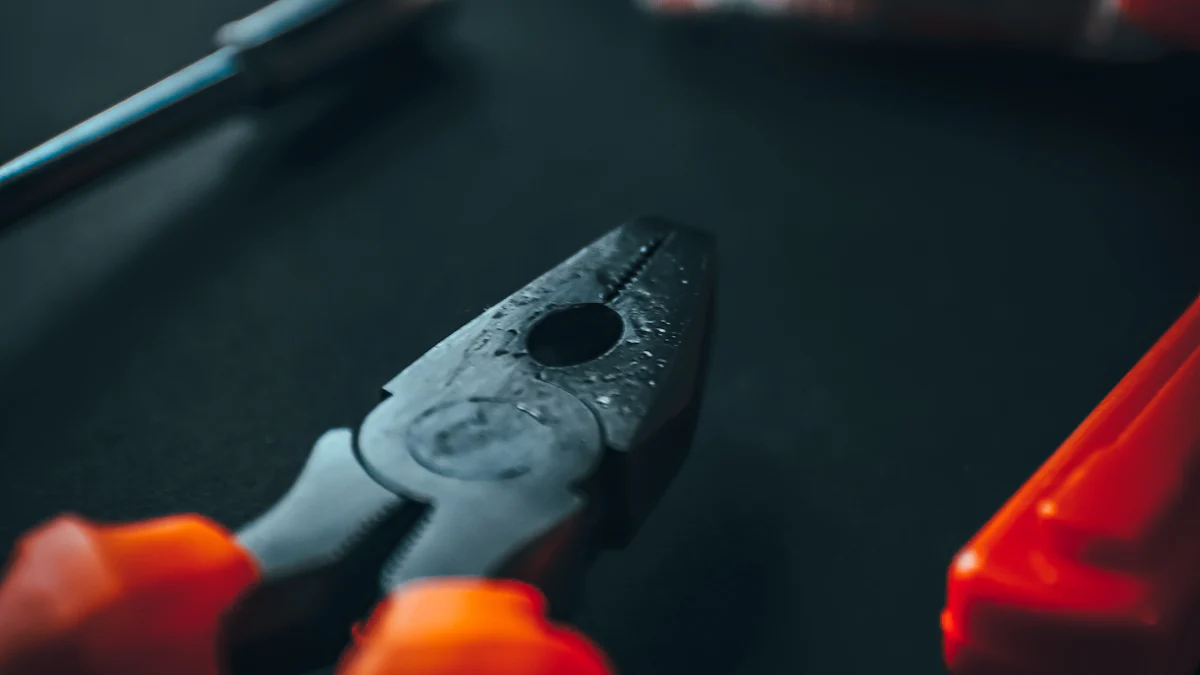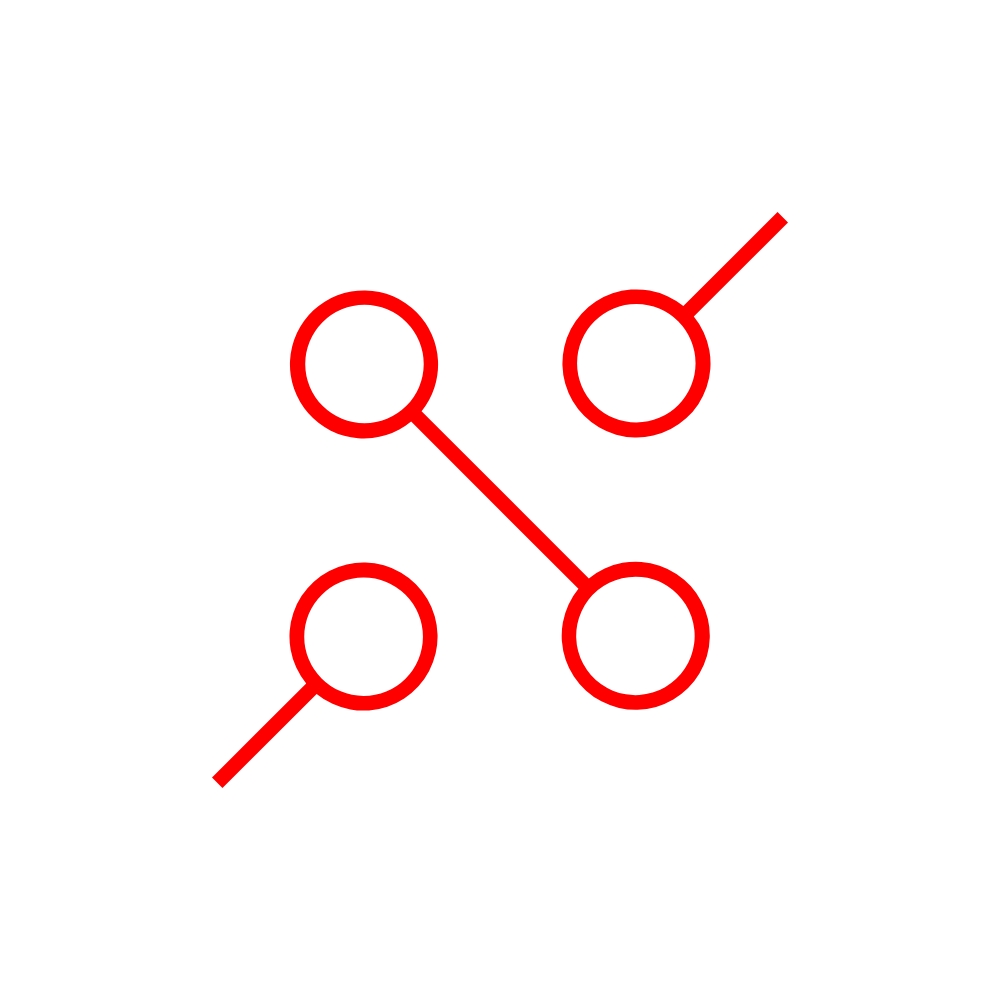What Are Crimpers and Their Uses?

Crimping plays a crucial role in both electrical and mechanical applications. It allows you to create secure connections by deforming connectors onto wires. This process is essential for ensuring reliable and efficient electrical connections. You might use crimpers, which are tools designed to bend and pinch terminals onto the bare conductors at the end of a wire. These tools come in various forms, including hand-held crimpers, hydraulic hose crimpers, and wire crimpers. Each type offers unique benefits, making them indispensable in different scenarios. Whether you're a professional or a DIY enthusiast, understanding these tools can significantly enhance your work quality.
Understanding Crimpers
Definition and Function
What is a Crimper?
A crimper is a tool you use to create secure connections between wires and connectors. It works by deforming the connector onto the wire, ensuring a tight fit. This process is crucial in electrical work, where reliable connections are a must. Crimpers come in various forms, each designed to suit different tasks and preferences.
How Crimpers Work
Crimpers operate by applying pressure to a connector, which then grips the wire securely. You place the wire and connector into the tool, squeeze the handles, and the crimper does the rest. The pressure deforms the connector, creating a bond that holds the wire firmly in place. This method ensures that your connections are both strong and durable.
Types of Crimpers
Hand Crimpers
Hand crimpers are the most common type you'll encounter. They're portable and easy to use, making them ideal for small jobs or DIY projects. Some hand crimpers, like the Knipex crimping tool, feature a lever ratcheting mechanism. This design provides consistent crimps without straining your hands. The soft rubberized grip adds comfort, especially during repetitive tasks.
Bench Crimpers
Bench crimpers are larger and more robust than hand crimpers. You typically find these in workshops or industrial settings. They offer greater precision and can handle larger volumes of work. Bench crimpers often come with interchangeable die sets, allowing you to crimp multiple contact types with one tool. This versatility can be cost-effective if you frequently work with different connectors.
Automated Crimpers
Automated crimpers take efficiency to the next level. These machines handle the crimping process with minimal manual intervention. They're perfect for high-volume production environments where speed and consistency are paramount. While the initial investment might be higher, automated crimpers save time and reduce labor costs in the long run.
Exploring Applicators
Role of Applicators in Crimping
Definition of Applicators
Applicators are essential components in the crimping process. They serve as the heart of a crimping machine, ensuring precision and efficiency. You might wonder what exactly an applicator does. Well, it folds the conductor wire and pushes it inside the terminal wing. This action is crucial for creating a secure connection. The design of an applicator varies based on different press heights and stroke presses, allowing them to be used in various processes.
Expert Insight: "Applicators are the most efficient and precise way of crimping. This is due partly to the way the crimp contacts come on a reel and by the fact that they are operated by 5-5 Ton press ensuring the crimp is precise and delivered with the exact amount of force required."
How Applicators Enhance Crimping
Applicators enhance crimping by providing consistency and accuracy. They ensure that each crimp is delivered with the exact amount of force needed. This precision is vital for maintaining the integrity of electrical connections. With a good feeding arrangement, applicators can produce high-quality crimps consistently. This reliability makes them indispensable in high-volume production environments where precision is non-negotiable.
Types of Applicators
Manual Applicators
Manual applicators are straightforward and user-friendly. You operate them by hand, making them suitable for smaller tasks or when you need more control over the crimping process. These applicators are perfect for situations where precision is necessary but the volume of work is manageable. They offer a hands-on approach, allowing you to feel the crimping process and make adjustments as needed.
Automated Applicators
Automated applicators take crimping to a whole new level. They handle the process with minimal manual intervention, making them ideal for large-scale operations. These machines are designed for speed and consistency, reducing labor costs and increasing productivity. While they require a higher initial investment, the efficiency they bring to the table can significantly outweigh the costs in the long run. Automated applicators ensure that every crimp is uniform, which is crucial for maintaining quality in mass production.
The Function of Presses in Crimping

Definition and Purpose
What are Presses?
Presses play a pivotal role in the crimping process. You might wonder what exactly a press does. Well, it applies force to deform a connector onto a wire, ensuring a secure connection. This tool is essential in various industries, from automotive to telecommunications, where reliable electrical connections are crucial. Presses come in different forms, each designed to meet specific needs and applications.
How Presses Assist in Crimping
Presses enhance the crimping process by providing the necessary force to create strong and durable connections. They ensure that each crimp is consistent, which is vital for maintaining the integrity of electrical systems. By using presses, you can achieve high precision and efficiency, especially in high-volume production environments. This consistency reduces the risk of faulty connections, which can lead to system failures.
Types of Presses
Manual Presses
Manual presses are straightforward and easy to use. You operate them by hand, making them ideal for smaller tasks or when you need more control over the crimping process. These presses are perfect for situations where precision is necessary but the volume of work is manageable. They offer a hands-on approach, allowing you to feel the crimping process and make adjustments as needed.
Hydraulic Presses
Hydraulic presses take crimping to a whole new level. They use hydraulic power to apply force, making them suitable for larger tasks and more demanding applications. These presses are often used in industrial settings where speed and consistency are paramount. Hydraulic hose crimpers, for example, are designed to handle heavy-duty tasks, ensuring that each crimp is uniform and reliable. The use of hydraulic power allows for greater force and precision, making these presses indispensable in many industries.
Pneumatic Presses
Pneumatic presses use compressed air to apply force, offering a balance between manual and hydraulic presses. They're ideal for medium-sized tasks where you need more power than a manual press can provide but don't require the full force of a hydraulic press. Pneumatic presses are efficient and easy to operate, making them a popular choice in various production environments. They provide consistent results, ensuring that each crimp is secure and reliable.
Methods of Tool Actuation
Overview of Actuation Methods
When it comes to crimping, the way you actuate your tools can make a big difference in efficiency and ease of use. Let's dive into some common methods.
Manual Actuation
Manual actuation is the most straightforward method. You use your hands to operate the tool. This method gives you direct control over the crimping process. It's perfect for small jobs or when precision is key. You might find manual actuation ideal for DIY projects or tasks that require a personal touch. The simplicity of manual tools makes them accessible and easy to maintain.
AC Powered Actuation
AC powered actuation involves using electricity to power your crimping tools. This method offers more power than manual actuation. It's suitable for tasks that require consistent force and speed. You plug these tools into an electrical outlet, which means they can run continuously without needing a recharge. AC powered tools are great for workshops or settings where you need to handle larger volumes of work efficiently.
Advanced Actuation Techniques
For more demanding applications, advanced actuation techniques come into play. These methods offer enhanced power and precision.
Battery Powered Actuation
Battery powered actuation provides the convenience of portability. You don't need to be near an electrical outlet to use these tools. This flexibility makes them ideal for fieldwork or situations where mobility is crucial. Battery powered tools combine the ease of manual operation with the power of AC tools. They are perfect for professionals who need to move around frequently while maintaining efficiency.
Hydraulic and Pneumatic Actuation
Hydraulic and pneumatic actuation represent the pinnacle of power and precision in crimping. Hydraulic tools use fluid pressure to deliver immense force, making them suitable for heavy-duty tasks. Pneumatic tools, on the other hand, use compressed air. They offer a balance between power and ease of use. Both methods are excellent for industrial applications where speed and consistency are vital.
Expert Insight: "Pneumatic applicators are more accurate and repeatable compared to mechanical applicators. They offer stable and compact designs with good repeatability."
These advanced techniques ensure that your crimping process is efficient and reliable, especially in high-volume production environments. Whether you're working on a large-scale project or need precision for intricate tasks, choosing the right actuation method can significantly impact your results.
Comparative Analysis of Crimpers, Applicators, and Presses
Key Differences
Functionality Comparison
When you dive into the world of crimping tools, you'll notice that each type serves a unique purpose. Crimpers are your go-to for creating secure connections between wires and connectors. They work by deforming the connector onto the wire, ensuring a tight fit. You might find them handy for simple electrical tasks where reliability is key.
Applicators, on the other hand, are the heart of a crimping machine. They fold the conductor wire and push it inside the terminal wing. This action ensures precision and efficiency, making applicators ideal for high-volume production environments. They deliver consistent crimps with the exact amount of force needed.
Presses apply force to deform a connector onto a wire. They are essential in industries where reliable electrical connections are crucial. You might use presses in automotive or telecommunications settings. They ensure each crimp is consistent, maintaining the integrity of electrical systems.
Efficiency and Speed
In terms of efficiency and speed, automated crimpers and applicators take the lead. They handle the crimping process with minimal manual intervention, making them perfect for large-scale operations. You can expect these machines to reduce labor costs and increase productivity.
Hand crimpers and manual presses offer more control but require more effort. They're suitable for smaller tasks where precision is necessary. You might find them ideal for DIY projects or when you need a personal touch.
Appropriate Use Cases
When to Use Crimpers
You should reach for crimpers when working on small to medium-sized electrical projects. They're perfect for attaching connectors to the end of electrical cables. If you're a DIY enthusiast or handling tasks that require reliable connections, crimpers are your best bet.
When to Use Applicators and Presses
Applicators and presses shine in industrial settings. You should use them when dealing with high-volume production environments. Applicators provide precision and consistency, making them indispensable for mass production. Presses, especially hydraulic and pneumatic ones, offer the power needed for heavy-duty tasks. They're ideal for applications where speed and reliability are paramount.
Quick Tip: Choose the tool that best fits your project's needs. Consider factors like volume, precision, and the type of connection required.
Choosing the right crimping tool is crucial for achieving reliable and efficient connections. Each tool type offers distinct advantages:
Crimpers: Ideal for creating secure wire connections with ease. Tools like the Knipex crimping tool provide consistent results without straining your hands, thanks to their lever ratcheting mechanism and comfortable grip.
Applicators: Known for their efficiency and precision. They ensure each crimp is delivered with the exact force needed, making them perfect for high-volume tasks.
Presses: Essential for applying the necessary force in industrial settings, ensuring strong and durable connections.
Consider your specific needs and project requirements when selecting crimping tools. This thoughtful approach will enhance your work quality and efficiency.
See Also
Adaptable Direct Current Power Distribution: Transforming Power Consumption
Conventional Low Voltage Options versus Adaptable DC Power Distribution: An In-depth Comparison
